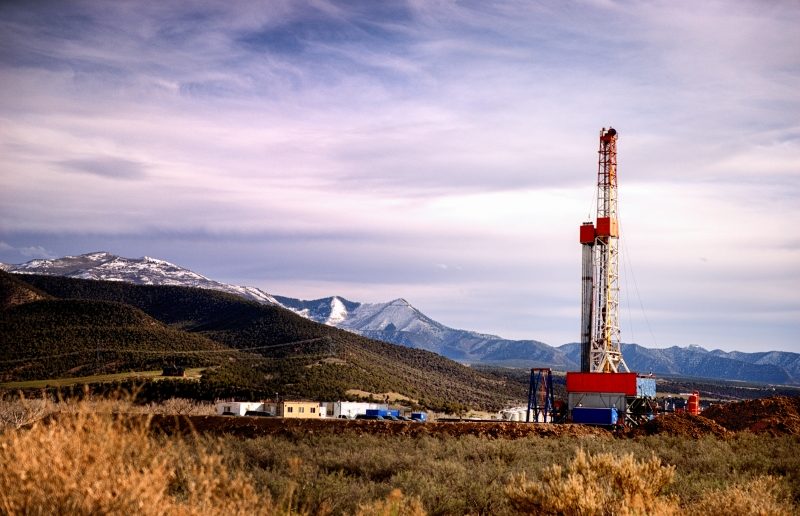As traditional reserves deplete and oil prices rise, market analysts predict that the global demand for petroleum products will increasingly be met with oil extracted from non-traditional resources in more challenging and harsher environments. Therefore, companies across the oil & gas industry are evaluating technologies and processes that can deliver profitable returns in expensive, high-risk situations. Some of the innovation themes under scrutiny include high-pressure, high-temperature (HPHT) drilling, wellhead, and related industrial technologies for harsh environments, and enhancement in subsurface communication by using real-time, down-hole measurements.
But what role can data analytics play to make future exploration and production more efficient and safer?
Successful application of data-driven analytics
There have been several reported examples in the press about new oil and gas discoveries. For example, BP initiated production from a natural gas well in the Mancos Shale of New Mexico. The enormous potential of this discovery is being hyped by the US Geological Survey as the second-largest gas resource in the United States, second only to the Marcellus Shale. The drilling operations are aiming to exploit a reservoir some 4,000 ft. below a coal zone. BP may drill 1,600 horizontal wells that could be 5,000 ft. in length.
The Mancos Shale, and others like it, may require the application of analytical models in completely new operational environments. These greenfield, data-driven analytics will play a critical role in optimizing the operational parameters for these wells. Maximizing the placement of the wells will depend on understanding the stress fields. Analytical models, based on a hybrid set of workflows, implementing engineering experience and the data-driven methodologies, will be critical to exploit the gas hidden in the tight layers.
Talos Energy is part of a joint venture that has discovered a major oil reservoir offshore Mexico. The first well was drilled in 546 ft. of water about 40 miles offshore in Tabasco State. It is estimated that the venture will exploit some 1.5 billion to 2 billion barrels of light oil. The energy reform established in 2014 by Mexico is certainly endorsed by this discovery. It's anticipated that deeper targets will be drilled to a vertical depth of some 14,000 ft. Future development strategies and tactics must be determined, aggregating seismic data and existing well data. Such an analytical study is better served by marrying big data-driven, soft-computing techniques with traditional interpretation. There will be ample opportunities to derive actionable knowledge from the enormous amount of raw data made available from hard measurements and soft interpretations.
Learning curve for new field strategies
Operators are climbing a precipitous learning curve as they struggle to understand optimal strategies for developing new fields based on data collected during the exploration phase, especially in the unconventional reservoirs. Engineers now team up with data scientists to apply deterministic workflows to characterize a reservoir, establish a drilling program, optimize a hydraulic fracture strategy and exploit reserves by maximizing production. There is no step in the upstream value chain that has not been transformed by the power of analytics.
What is the common denominator that brings together otherwise siloed geosciences? It is the oil and gas industry’s incredible thirst for quantifiable knowledge of the subsurface domain, garnered from analysis of spatial and temporal data. With more data available than ever before, the pressure is on to analyze the data and to derive actionable knowledge in an efficient and reliable manner.
Adopting the Industrial Internet of Things (IIoT)
There are currently about 5 billion devices connected to the internet. This figure is expected to increase to around 50 billion by 2020. Amidst this growth, the oil and gas industry is anticipated to witness a global IT investment of more than $48.5 billion by 2020, according to a recent IIoT and Digital Solutions for Oil and Gas report.
Exploration of greenfield and reengineering strategies for production in brownfields necessitates the digitalization of the assets to effectively use the industrial internet of things. Implementing the right tools across an enterprise data platform can counteract suppressed commodity prices, sustain profitability and reduce OPEX and CAPEX as well as maintain safety and return on investment.
The three critical steps for optimized field (re)-engineering and effective use of IIoT are:
- Access to quality-controlled spatial and temporal data collected from sensors.
- Automated and semi-automated exploration of the aggregated data to enable data-driven workflows.
- Domain knowledge and subject matter experts to break down the traditional engineering silos.
There is a far-reaching IT/OT landscape littered with marketing labels such as artificial intelligence, cognitive computing, deep learning, IIoT, big data, and data-driven analytics. To get beyond the hype, the business goals must be the focus. The adoption of these analytical capabilities create digital twins of valuable industrial assets in the form of data-driven models. The only thing slowing down their implementation is the effort required to change mindsets.
Society of Petroleum Engineers (SPE) papers
The following SPE papers provide more insights on the application of analytics for exploration and development of green and brown fields:
- Predictive Analytics: Development and Deployment of Upstream Data Driven Models: SPE 153454
- Maximize the placement of wells and production in unconventional reservoirs: Part 1: SPE 149784
- Maximize the placement of wells and production in unconventional reservoirs: Part 2: SPE 149787
- Exploratory Data Analysis in Reservoir Characterization Projects: SPE 125368
- Drilling and Completion Optimization in Unconventional Reservoirs with Data-Driven Models: SPE 176820
- Drilling Optimization in Unconventional and Tight Gas Fields: An Innovative Approach: SPE 142509
This is my third post that shares relevant SPE papers for readers. You can read all three posts here.

